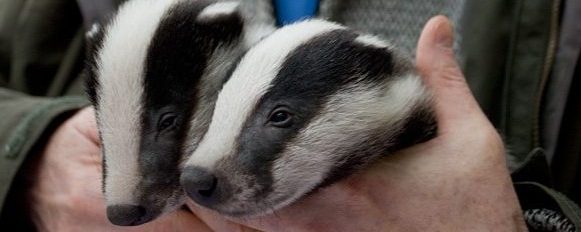A shift of emphasis

Was it the damning April report on the failed Cumbria badger culls that has led to the clear change in the way that APHA’s is now attributing source of bTB infection in cattle? Have the crazy proposals for the so-called ‘epidemiological culling’ policy been recognised for the epidemiological nonsense that they are?
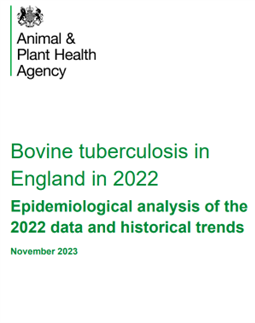
Or is it simply that the raft of Whole Genome Sequencing (WGS) results clearly indicate cattle movements as the main distributor of bovine TB? Either way, the new epidemiology report for England published this November shows a dramatic shift of emphasis in the attribution of source of infection.
While previous APHA reports have laboured to claim that around half of cattle bTB infections are attributed to badgers, the analysis for 2022 of the results of ‘bovine tuberculosis epidemiology and surveillance in England and Great Britain‘, published earlier this week (20th November) (read here) tells a different story.
Outrageous attribution
It looks like the death knell for the perpetually dodgy and unscientific ‘Risk Pathways’ approach that was so heavily slated in the April report by independent scientists earlier this year. Risk Pathways was introduced in 2017, as evidence to cull badgers across the whole of west England and more. Every APHA ‘epi’ annual report since 2017 has contained a table with the consequence of condemning badgers to more culling.
Now, with the speculative nature of the approach well exposed, APHA have no choice but to do what they should have done before badger culling began – shift emphasis to the necessary cattle testing and herd management. These are the only measures that will actually move bovine tuberculosis in cattle towards elimination using the right cattle tests from the cattle testing toolbox.
See below in the 2021 analysis: the first column claims outrageously high attribution of source of infection to badgers, at over 50%.
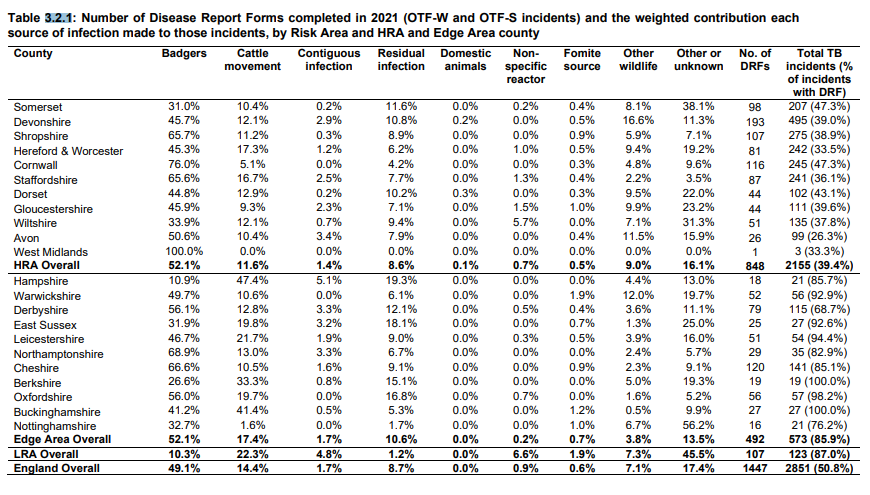
In this years table for 2022 (see below), the column has gone, and the switch to uncertainty is complete.
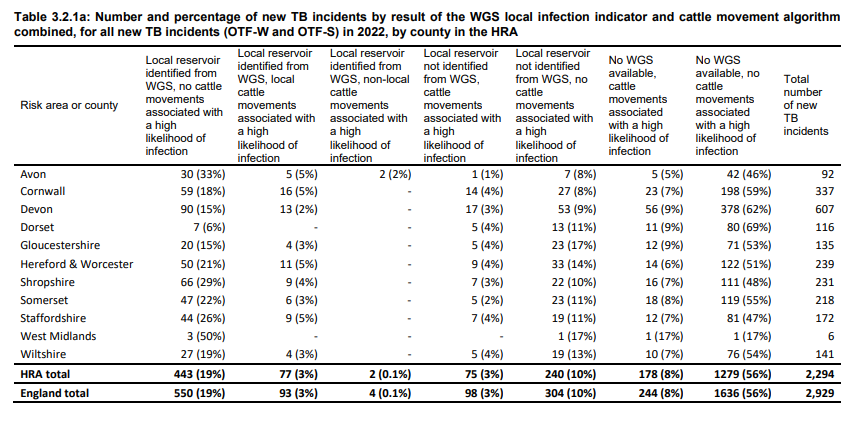
Compare the pies
Compare also, the pie chart of disease sources from 2021 (below) with that for 2022 (below that). Where once badgers were getting 52% of the blame, 56% is now shown ‘blank’ – effectively showing as uncertain.
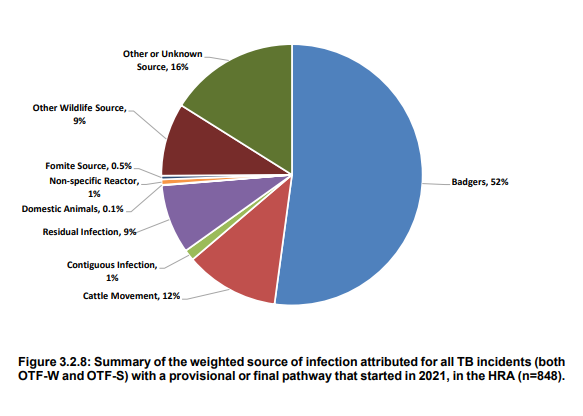

What is concluded from this welcome, but far too late in the day revision? The ridiculous blaming of badgers was just too unevidenced, too ridiculous. APHA can no longer deny that evidence now points to the source of bTB infection being all but totally from livestock and livestock infected pastures. And it can only be addressed by livestock measures.
APHA’s hopeless Disease Report Form (DRF) to coax vets into naming badgers as a cause of new cattle infections was heavily criticised by a Derbyshire Wildlife Trust veterinary report in 2019. In their supplementary file, also recently released, APHA now say:
“A new Disease Report Form (DRF), for recording cattle TB incident investigations, is under development. This aims to enhance data capture and review the methodology around how we assess source attribution to improve understanding of TB transmission pathways and the evidence base for biosecurity advice.”
Whole Genome sequencing can now be used to better understand transmission routes. There is no excuse for anything but bringing all badger culling to an immediate and permanent stop.
Discover more from The Badger Crowd - standing up for badgers
Subscribe to get the latest posts sent to your email.

